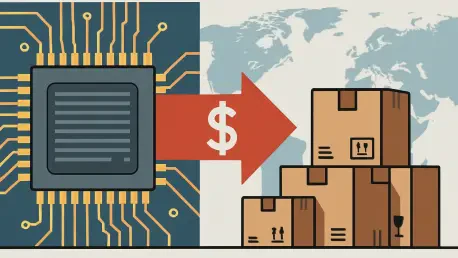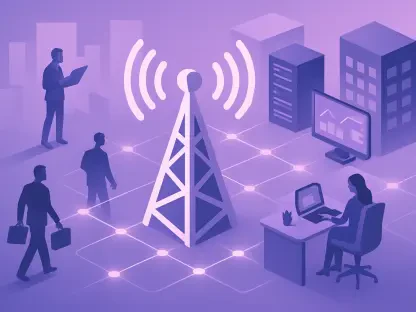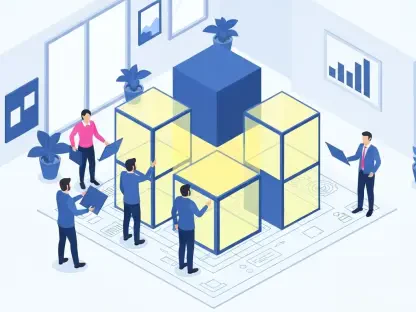I’m thrilled to sit down with Chloe Maraina, our resident Business Intelligence expert with a deep passion for transforming big data into compelling visual stories. With her sharp insights into data science and a forward-thinking vision for data management, Chloe is uniquely positioned to unpack the implications of recent policy shifts in the semiconductor industry. Today, we’ll dive into the impact of new tariffs on semiconductor imports, exploring how they’re reshaping enterprise technology budgets, procurement strategies, and the competitive landscape for CIOs navigating this complex terrain.
How do you see the recent 100% tariff on semiconductor imports influencing the broader tech industry, and what makes this policy different from past approaches?
This tariff is a seismic shift for the tech industry. A 100% duty on imported semiconductors essentially doubles the cost of critical components for many companies, pushing up prices for everything from enterprise servers to AI infrastructure. Unlike previous policies, which often targeted specific countries or had graduated rates, this blanket approach hits all non-US manufactured chips hard. It’s a bold move to drive domestic production, but it risks disrupting global supply chains that have been optimized for decades. The exemption for US-based manufacturing also creates a stark divide, incentivizing companies to relocate or partner with domestic players, which could reshape competitive dynamics overnight.
What are the immediate effects of the predicted 50-80% price hikes on CIO budgets, especially in the short term?
In the short term, these price hikes are a gut punch for CIOs. Budgets that were already stretched thin by digital transformation initiatives now face unexpected cost surges for hardware and infrastructure. We’re talking about a potential doubling of expenses for critical systems within a quarter for some organizations. This forces tough choices—delaying projects, scaling back on innovation, or reallocating funds from other priorities. Smaller enterprises or those in cost-sensitive industries like retail might feel this squeeze more acutely since they lack the negotiating power or cash reserves of larger firms.
Can you explain the concept of a ‘two-tier enterprise hardware market’ created by these tariff exemptions and its implications for tech buyers?
Absolutely. The two-tier market refers to a split between vendors who manufacture in the US and qualify for tariff exemptions, and those who rely on Asian production and face the full brunt of the 100% duty. For tech buyers, this means that two technically similar solutions could have wildly different price tags based solely on where components are made. CIOs will need to weigh whether paying a premium for tariff-exempt hardware from US-based vendors is worth it, especially in regulated sectors where compliance might favor domestic sourcing. It’s a new layer of complexity in an already complicated procurement process.
How do you think this tariff policy will influence the way CIOs select vendors and negotiate contracts moving forward?
This policy flips vendor selection on its head. Manufacturing location is now a top criterion, sometimes even above performance or cost. CIOs will likely prioritize vendors with US production capacity to avoid tariff-driven price spikes, which could give companies like Intel or Micron an edge in negotiations. We’ll see more contracts with clauses tied to sourcing guarantees or price protection against future tariff changes. CIOs will also need to push for transparency in bills of materials to ensure they’re not indirectly paying for imported components disguised in the supply chain.
Certain hardware categories, like PCs, seem to be exempt from these tariffs. Can you shed light on why that might be and which other areas could dodge the cost increases?
PCs likely dodged the tariff bullet because many of their processors are sourced from companies like Intel or TSMC, which may have exemptions or existing US ties, and there’s a political and economic interest in keeping consumer tech affordable. Other categories that might escape significant impact include certain networking equipment or legacy systems that don’t rely on the most advanced chips targeted by this policy. However, this isn’t set in stone—exemptions can shift based on implementation details or lobbying efforts, so CIOs shouldn’t bank on long-term relief for any specific category just yet.
What are some of the biggest challenges CIOs face in overhauling their procurement strategies in response to these tariffs?
The biggest challenge is the sheer uncertainty. CIOs now need to scrutinize supply chains at a granular level, understanding not just where a product is assembled but where every critical component originates. That’s a massive undertaking, especially when vendors might not have full visibility themselves. There’s also the pressure to act fast—accelerating purchases or locking in contracts before prices spike further—while avoiding rash decisions that could lock them into unfavorable terms. Balancing speed with due diligence, all while managing tighter budgets, is a real tightrope walk.
With suggestions to speed up datacenter purchases and secure long-term contracts to mitigate tariff impacts, how practical do you find these strategies for most organizations?
These strategies sound good on paper, but they’re not universally practical. Speeding up datacenter purchases requires significant capital and confidence in long-term needs, which many organizations—especially smaller ones—simply don’t have. Long-term contracts can lock in pricing, but they also reduce flexibility if better options emerge or needs change. For larger enterprises with predictable workloads and deeper pockets, these moves make sense. But for others, the risks of overcommitting or misjudging future requirements can outweigh the benefits of dodging near-term cost increases.
What advice do you have for our readers who are grappling with these sudden shifts in the tech procurement landscape?
My advice is to get proactive and granular. Start by mapping out your current hardware dependencies and identifying which components or vendors are most exposed to these tariffs. Build relationships with suppliers who can offer transparency and verifiable US manufacturing claims—don’t just take marketing at face value. Consider hybrid strategies, like shifting non-critical workloads to cloud providers who might absorb some cost inflation. Finally, embed flexibility into your plans. Use modular systems where possible and negotiate contracts with exit clauses or price adjustment mechanisms. This isn’t just about surviving the next quarter; it’s about positioning your organization to adapt as the policy landscape evolves.









